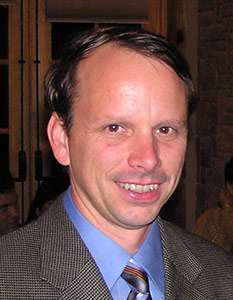 My journey in December 2010 started with six months of ever-increasing back and abdominal pain. I was serially shuffled from my primary care physician to various specialists to rule out the most likely ailments. It was an especially frustrating time, as no specialists consulted any others, and each would start my pain medications back at zero. Each specialist would find something minor, claim success, and send me on my way. After an ultrasound, endoscopy, colonoscopy, X-rays and CT scan, five months later, I was still in excruciating pain with no resolution. On a Thursday, the thought of another weekend without access to a doctor led me to the emergency room.
My journey in December 2010 started with six months of ever-increasing back and abdominal pain. I was serially shuffled from my primary care physician to various specialists to rule out the most likely ailments. It was an especially frustrating time, as no specialists consulted any others, and each would start my pain medications back at zero. Each specialist would find something minor, claim success, and send me on my way. After an ultrasound, endoscopy, colonoscopy, X-rays and CT scan, five months later, I was still in excruciating pain with no resolution. On a Thursday, the thought of another weekend without access to a doctor led me to the emergency room.
The emergency room doctor could find no reason for my pain, either, and contacted my primary care physician to determine if I was addicted to pain killers and looking for a fix. My PCP said, “no way,” and the emergency room doctor ran a CT scan, which finally showed a pancreatic tumor.
Despite knowledge of a BRCA2 mutation in our family, none of the doctors suspected pancreatic cancer. However, the oncologists at the high-volume pancreatic cancer hospital where I received treatment knew what to do. My tumor encased the superior mesenteric artery (SMA), and surgery was not an option. Recently published case studies reported outstanding results using a certain chemotherapy treatment in a pancreatic ductal adenocarcinoma (PDAC) patient with a BRCA2 mutation. The same combination had been used in BRCA2 patients with other cancers with some success. My doctor treated my cancer by its mutation type rather than strictly by its location.
Realizing that “standard treatments result in standard outcomes” (not good for pancreatic cancer), I opted for the treatment combination. Within a few days, my pain level was below the level of the drugs I had been taking. My “personalized treatment” based on a BRCA2 mutation in my tumor resulted in a spectacular tumor reduction. After nine rounds, we could no longer see any further reductions in size. We decided to “lock in” our gains with chemoradiation therapy. For the next year, I had no symptoms, reduced my pain medications to nothing, and lived my life between scans. During this time, I researched and placed myself on a waiting list for a vaccine clinical trial.
During each trip to the doctor, one of my questions was, “Have I become eligible for surgery?” A year after diagnosis, the answer changed to “maybe,” and we explored this option. A CT/PET scan showed no tumor activity, and the “tumor board” was split on whether I was cured or not. They left the decision up to me, and I went forward with surgery instead of the clinical trial.
Surgery was successful with negative margins, a 5mm tumor buried in a larger area of scar tissue, and no lymph node involvement. My surgeon was supremely confident and declared that I needed no adjuvant therapy. I promptly enrolled in an adjuvant therapy clinical trial for a vaccine at another high-volume pancreatic cancer hospital. It added the benefit of receiving treatment inside two of the very best pancreatic cancer hospitals in the country.
I am active on several patient online forums, including as moderator of the pancreatic forum at cancerforums.net. I take my experiences as a patient, knowledge as a researcher, background in science, and past histories of other forum members to relay information to the newly diagnosed. I am involved in BRCA forums as well, even speaking at FORCE’s 2015 annual conference. I stay physically active on my road bicycle, covering more than 8000 miles in 2015.
If cancer is to come for me again, my plan is to be ready. I’m lined up at the top hospitals. I’ve researched the next treatment options. My body is in shape for any fight ahead.
I have hope.
















